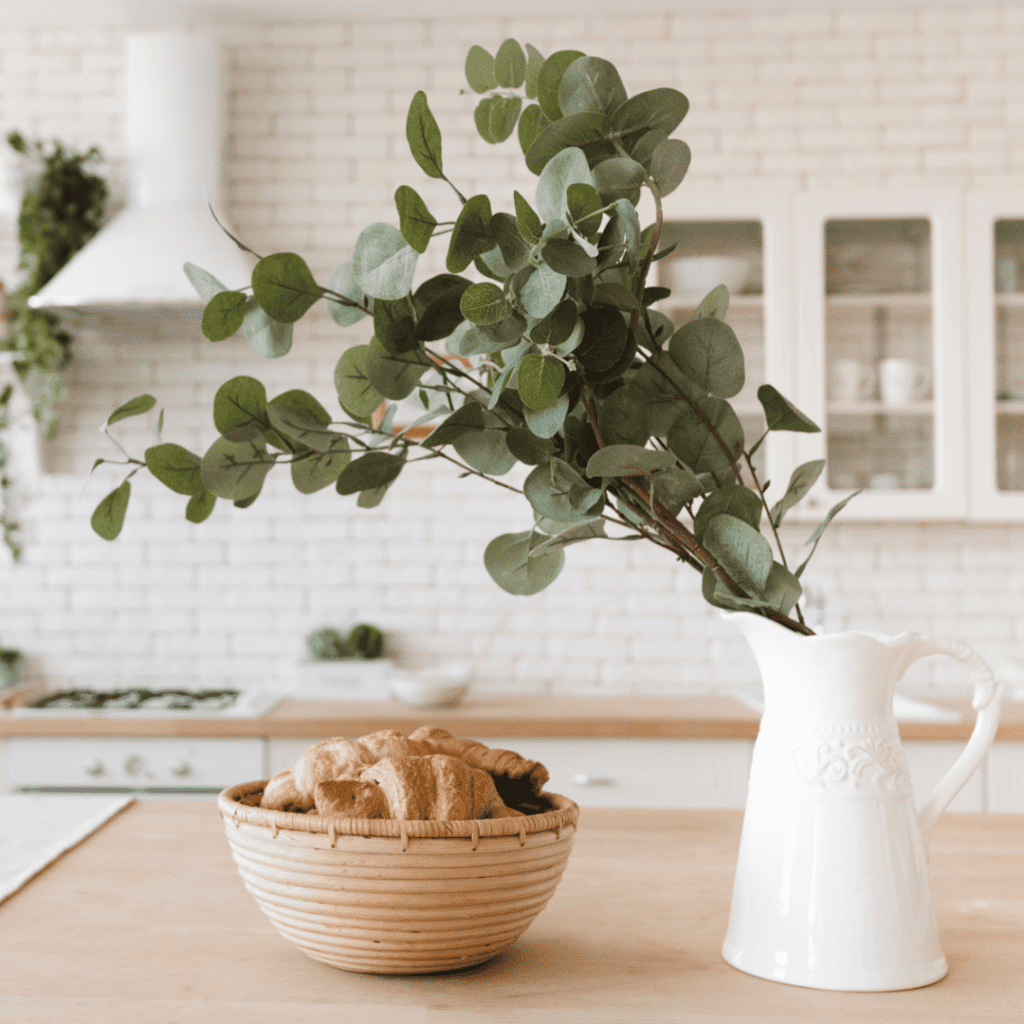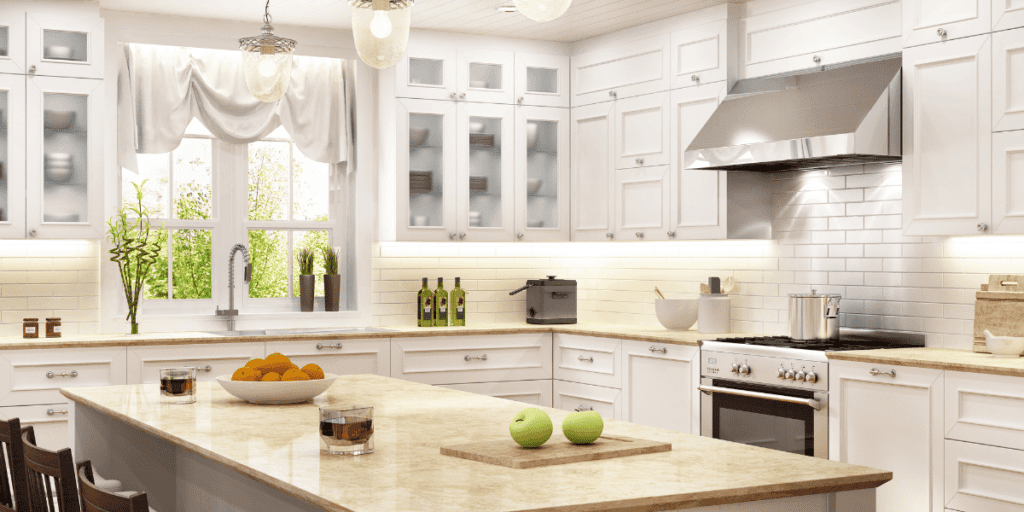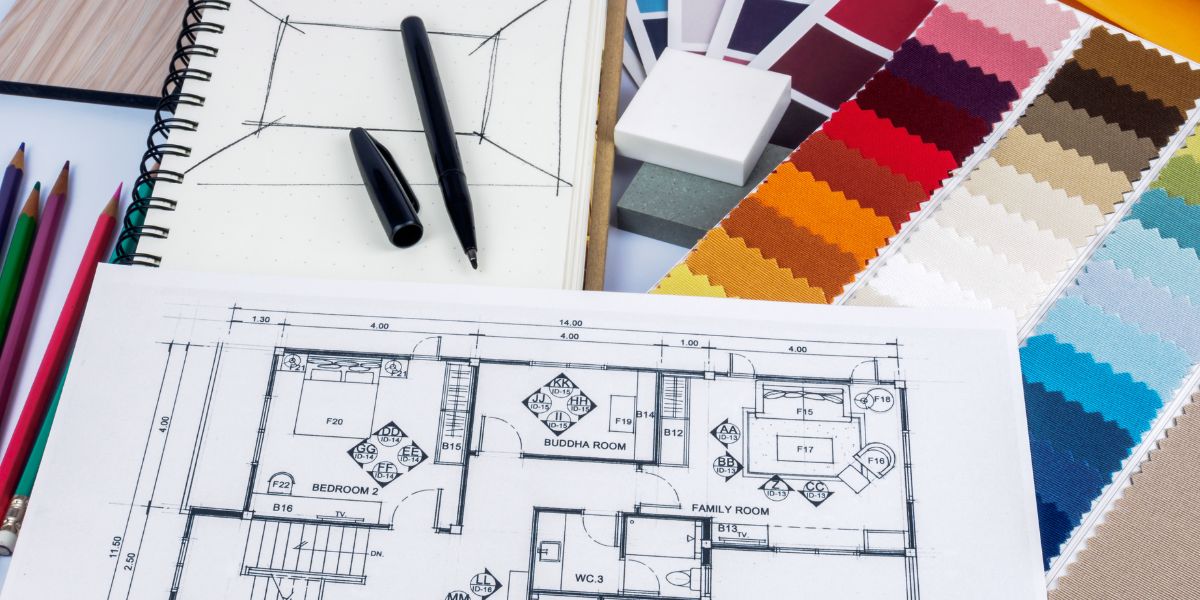
Introducing Earthy Tones Kitchens
Earthy tones kitchens are inspired by the natural colors found in nature, a combination which helps create a warm and inviting atmosphere in one of the most important spaces of your home. Using earthy, neutral tones in kitchen design has become increasingly popular as homeowners look for ways to bring a sense of calm and serenity to their living spaces.
Benefits of Using Earthy Tones in Kitchen Design
There are several benefits to incorporating earthy tones into your kitchen design, including:
- Creating a calm and relaxing atmosphere: Earthy tones evoke the peacefulness of nature, promoting a sense of tranquility in your kitchen. This can be particularly helpful in reducing stress during meal preparation and cleanup.
- Timeless appeal: Earthy tones have a classic and timeless appeal that ensures your kitchen will remain stylish for years to come.
- Versatility: Earthy tones work well with a variety of design styles, from modern and minimalist to traditional and rustic, making them a versatile choice for any kitchen.
- Complementary to natural materials: Earthy tones pair beautifully with natural materials like wood, stone, and marble, further enhancing the connection to nature in your kitchen.

What are Earthy Tones?
Earthy tones are colors that are inspired by the natural world, including the dark hues found in soil, foliage, wood, and stone. Some common examples of colorful, earthy tones include:
- Greens: Shades like Forest green, olive, moss, and sage green are reminiscent of lush vegetation and bring a sense of life and vitality to your kitchen.
- Browns: Colors like chocolate, espresso, walnut and taupe provide a sense of warmth and grounding, drawing inspiration from the earth and wood.
- Beiges and tans: Soft and neutral shades like sand, beige, cream and khaki evoke the colors of natural fibers, creating a soothing and calming atmosphere in your kitchen.
- Blues: While blues might not be the first color that comes to mind when thinking of earthy tones, they can evoke feelings of calmness, tranquility, and connection to nature. Inspired by the sky and water, various shades of blue can bring a serene, grounded ambiance to your kitchen design. Examples include: Slate blue, dusty blue, denim, and muted teal
- Terracotta and Rust: These warm and earthy hues take inspiration from clay and aged metals, adding depth and richness to your kitchen design. Examples include: Burnt orange, terracotta, rust, and brick
- Yellows: Yellow, often associated with warmth, happiness, and energy, can also serve as an earthy tone in kitchen design. Earthy shades of yellow can bring a sense of coziness and connection to nature, reminiscent of golden sunsets, fields of wheat, or warm sand. Let’s explore different types of earthy yellow tones and how they can enhance your kitchen design. Examples include: Mustard, ochre, and goldenrod
Relation to Nature and Calming Effects
Earthy tones are intrinsically connected to the natural world, which has a profound influence on our emotional well-being. Studies have shown that exposure to nature, even in the form of colors and sound, can help reduce stress, improve mood, and enhance cognitive function.
By incorporating bright, earthy tones into your kitchen design, you create an environment that feels grounded, nurturing, and calming. These colors serve as a visual reminder of our connection to nature, inviting us to slow down, breathe deeply, and appreciate the beauty of the natural world.
Popular Earthy Tones for Kitchens
There are several earthy tones that work exceptionally well in kitchen spaces. Some popular earth tone options include:
- Olive Green: Olive green is a versatile and sophisticated shade that adds warmth to your kitchen. It works well with various design styles, from modern and minimalist to traditional and rustic. This hue can enhance the overall ambiance of a kitchen by bringing a sense of freshness and vitality, reminiscent of lush greenery. When paired with natural materials like wood or stone, olive green can create a harmonious and inviting atmosphere.
- Terracotta: Terracotta is a warm and earthy hue that takes inspiration from clay and aged metals. This color can add depth and richness to your kitchen, evoking the feeling of a cozy Mediterranean villa. When used on walls, tiles, or accents, terracotta can create a welcoming and comforting environment. Combining terracotta with other earthy tones or contrasting it with crisp white or cool gray can enhance the overall ambiance, making your kitchen feel both grounded and vibrant.
- Taupe: Taupe is a neutral and elegant shade that serves as a subtle backdrop for other design elements in your kitchen. Its versatility allows it to complement various materials and textures, from sleek stainless steel appliances to rustic wooden cabinetry. By incorporating taupe into your kitchen design, you can create a soothing and calming atmosphere. This color can also serve as a foundation for adding bolder accent colors or patterns, giving your kitchen a balanced and visually appealing aesthetic.
- Slate Blue: A muted and calming shade of blue, slate blue works beautifully with other earthy tones and can help create a serene and soothing atmosphere in a kitchen.
- Mustard Yellow: A bold and warm shade, mustard yellow can serve as a striking accent color in an earthy-toned kitchen, adding a touch of energy and vibrancy.
Selecting the Best Earthy Tones for Your Kitchen
Choosing the ideal earthy tones for your kitchen is crucial for creating a cohesive and visually appealing interior design throughout. Keep in mind the size, layout, and style of your kitchen when making your selection. Here are some tips to help you pick the perfect earthy tones:
- Assess your kitchen’s dimensions: If your kitchen is small or has limited natural light, opt for lighter earthy tones like pale green or soft beige to create an open and airy feel. Conversely, larger kitchens or those with ample natural light can accommodate darker shades like chocolate brown or slate blue without feeling cramped.
- Align with your kitchen’s style: Earthy tones can complement various design styles, but some colors may work better with specific aesthetics. For instance, olive green and terracotta could enhance a traditional or Mediterranean-style kitchen, while taupe and muted teal might be more suitable for modern or contemporary spaces.
- Take note of existing elements: Consider the colors, materials, and finishes already present in your kitchen. Select earthy tones that either complement or contrast with these elements to create a harmonious design.
The Importance of Lighting and Other Design Elements
Lighting plays a crucial role in determining how colors appear in your kitchen. It’s essential to consider both natural and artificial light sources when selecting earthy tones. Test paint swatches or material samples in your kitchen to observe how the colors look under various lighting conditions.
Additionally, designers should pay attention to other design elements like cabinetry, countertops, flooring, and fixtures. Choosing earthy tones that work well with these components will ensure a cohesive and balanced aesthetic.
Incorporating Earthy Tones into Kitchen Design Elements
There are numerous ways to infuse earthy tones into your kitchen design. Here are some ideas for integrating these colors into various elements in your own kitchen:
- Cabinetry: Choose earthy-toned cabinets to create a warm and inviting foundation for your kitchen design. Light wood finishes like oak or maple can evoke an earthy feel, while painted cabinets in shades like sage green or taupe provide a subtle touch of color.
- Countertops and backsplashes: Natural materials like granite, marble, or wood can bring earthy tones into your kitchen through their inherent colors and textures. Alternatively, opt for ceramic or glass tiles in earthy hues for your backsplash to add visual interest.
- Flooring: Select flooring materials in earthy tones like wood, cork, or natural stone to enhance the grounded and organic feel of your kitchen. These materials not only offer visual appeal but also provide warmth and comfort underfoot.
- Textiles and accessories: Introduce earthy tones through textiles like window treatments, rugs, and seat cushions. These accents can add pops of color and texture to your kitchen without requiring a significant commitment or investment. Additionally, display earthy-toned dinnerware, cookware, or decorative items to create a cohesive look.
- Paint and wall treatments: Use earthy-toned paint on your walls or incorporate wallpaper with nature-inspired patterns to create a backdrop that complements your kitchen design. Consider an accent wall in a bolder earthy tone like terracotta or mustard yellow for a striking focal point.
Showcasing Beautifully Designed Kitchens with Earthy Tones
In this section, we’ll explore some stunning examples of kitchens that showcase earthy tones in their design. Let’s examine the key design features and elements that make each earth-tone kitchen stand out:
Example 1: Modern Farmhouse Kitchen with Olive Green Cabinetry
This kitchen features olive green cabinetry that adds warmth and sophistication to the space. The white subway tile backsplash provides a crisp contrast, while the natural wood open shelving and farmhouse sink complement the earthy tones. Brass fixtures and hardware add warmth and a touch of elegance, enhancing the room and overall ambiance.
Example 2: Rustic Kitchen with Terracotta Accents
In this rustic kitchen, terracotta tiles serve as both flooring and backsplash, creating a warm and welcoming atmosphere. The natural wood cabinetry and exposed beams emphasize the earthy color palette, while the wrought iron fixtures and vintage accessories add character and charm to cooking space.
Example 3: Contemporary Kitchen with Taupe Walls and Muted Teal Island
This contemporary kitchen showcases taupe walls and cabinets that serve as a neutral backdrop for the sleek, white cabinetry and stainless steel appliances. The muted teal island provides a pop of earthy color, drawing the eye and adding visual interest. Large windows flood the space with natural light, enhancing the earthy tones and creating a serene atmosphere.
Cornerstone’s Final Thoughts
Incorporating earthy tones into your kitchen design offers numerous benefits. These colors evoke a sense of warmth, comfort, and connection to nature, making your kitchen an inviting, cozy appeal and soothing space to cook, dine, and gather with loved ones. Earthy tones work well with various design styles, from traditional and rustic to modern and contemporary.
By experimenting with different earthy tones and design elements, you can create a kitchen that reflects your personal taste in decorating and style. Don’t be afraid to mix and match colors, textures, and materials to achieve a balanced and harmonious aesthetic. With some creativity and inspiration, you can transform your kitchen into the earthy-toned haven of your dreams.
Your Dream Earthy-Toned Kitchen Awaits with Cornerstone Remodeling
Ready to bring your earthy-toned kitchen ideas to life? Cornerstone Remodeling is here to help. As experienced professionals in the home remodeling industry, we have the expertise and resources to make your own, earthy kitchen toned, vision a reality. From cabinetry and countertops to flooring and lighting, our team will work closely with you to select the perfect earthy tones and design elements for your unique space.
Don’t let your dream kitchen remain just a dream. Contact Cornerstone Remodeling today to schedule a consultation and start your journey towards creating the warm, inviting, and nature-inspired kitchen you’ve always wanted. Contact us or call us at (410) 336-7011 to get started. Let us help you transform your kitchen into a beautiful, earthy-toned sanctuary.




